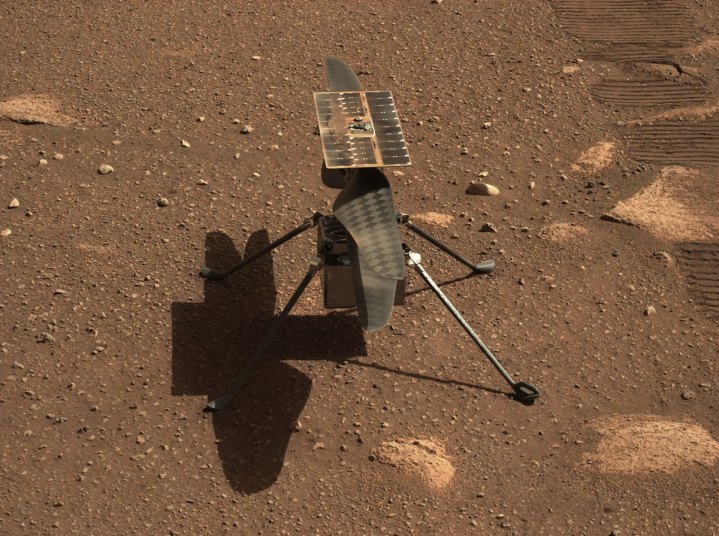Earlier this year, the beloved Mars helicopter Ingenuity ended its mission after an incredible 72 flights. Originally designed as a technology test intended to perform just five flights, NASA’s helicopter was the first rotorcraft to fly on another planet and was such a success that it has already inspired plans for more exploration of distant planets using rotorcraft. Its mission came to an end, however, when it damaged one of its rotors, leaving it unable to safely fly.
Even then, the helicopter was still able to communicate by sending signals to the nearby Perseverance rover, which acted as its base station. Now, though, Perseverance is traveling away from the helicopter to continue its exploration of Mars. So this week, the NASA team on the ground met for the last time to communicate with Ingenuity, bringing the mission to a final close.

“With apologies to Dylan Thomas, Ingenuity will not be going gently into that good Martian night,” said Josh Anderson, Ingenuity team lead at NASA’s Jet Propulsion Laboratory, in a statement. “It is almost unbelievable that after over 1,000 Martian days on the surface, 72 flights, and one rough landing, she still has something to give. And thanks to the dedication of this amazing team, not only did Ingenuity overachieve beyond our wildest dreams, but also it may teach us new lessons in the years to come.”
The Ingenuity team came together at NASA’s Jet Propulsion Laboratory for one last time April 16, overseeing the final transmission of data from the helicopter and sharing the traditional “Final Comms” chocolate cake.
However, Ingenuity won’t be shut down completely and left to sit idle. As its electronics are still operational, the team sent a final software update to Ingenuity instructing it to wake up each day, turn on its computers, check its solar power levels, and take a picture of the surface using its camera and record the temperature. The idea is to save a long-term archive of data showing how conditions change in this region of Mars — called Valinor Hills — and how the helicopter’s systems perform over time.
The helicopter won’t be able to send this data back to Earth, and it will eventually stop working because of power loss or failure, but its data will remain saved on board ready for future collection.
“Whenever humanity revisits Valinor Hills — either with a rover, a new aircraft, or future astronauts — Ingenuity will be waiting with her last gift of data, a final testament to the reason we dare mighty things,” said Ingenuity’s project manager, Teddy Tzanetos of JPL. “Thank you, Ingenuity, for inspiring a small group of people to overcome seemingly insurmountable odds at the frontiers of space.”



